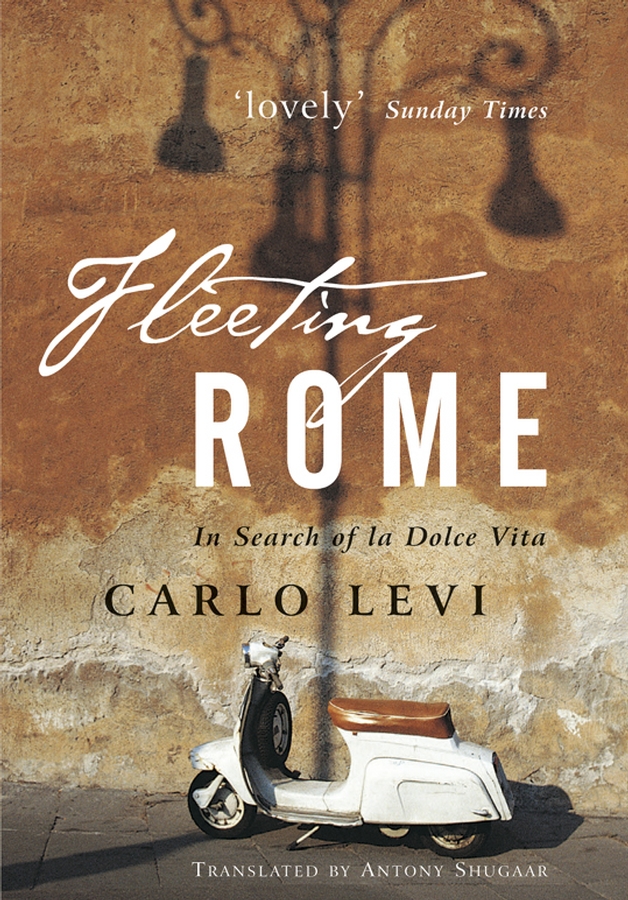Электронная книга: Carlo Levi «Fleeting Rome. In Search of la Dolce Vita»

|
Only a renaissance man could have described this glorious city in its heyday. And only Carlo Levi, writer, painter, politician and one of the last century's most celebrated talents, could depict Rome at the height of its optimism and vitality after World War II. In Fleeting Rome, the era of post war'La Dolce Vita'is brought magnificently to life in the daily bustle of Rome's street traders, housewives and students at work and play, the colourful festivities of Ferragosto and San Giovanni, the little theatre of Pulcinella al Pincio; all vibrant sights and sounds of this ancient, yet vital city. Издательство: "John Wiley&Sons Limited (USD)"
ISBN: 9780470871850 электронная книга Купить за 1039.32 руб и скачать на Litres |
Carlo Levi
.
He is best known for his book, "Cristo si è fermato a Eboli" ("Christ Stopped at Eboli"), published in 1945, a memoir of his time spent in exile in
__TOC__
Early life
Levi was born in
Levi never completely abandoned his medical studies and served as assistant to Prof. Micheli at the University of Turin's Clinic from 1924 to 1928, working on research involving hepatopathy and diseases of bile tract. From 1924 to 1928, Levi continued his specialization studies in Paris with Professor Bourguignon among others, although by 1927 Levi had decided to dedicate his life to painting. Levi's early time in Paris, as a painter and as a student of medicine, brought him into contact with many notable personalities of the 20th century, including
Political activism and exile
In 1929, along with Carlo and Nello Rosselli he founded an anti-fascist movement called "Giustizia e Libertà", becoming a leader of the Italian branch along with
As a result of his activism and involvement with anti-fascist movements, Levi was arrested and exiled to Aliano (Gagliano in the book), a town in a remote area of Italy called
After his release, he moved to
After
Works
Below is a list of important works written by Carlo Levi. Publisher (where appropriate) and date of publication follow each work [Levi, Carlo, and Gigliola De Donato. Roma fuggitiva: una città e i suoi dintorni. Saggi. Roma: Donzelli, 2002: 157-164] :
* "Paura della pittura" (1942)
* "Cristo si è fermato a Eboli" (Einaudi, 1945)
* "Paura della libertà" (1946)
* "L'orologio" (Einaudi, 1950)
* "Le parole sono pietre" (Einaudi, 1955)
* "II futuro ha un cuore antico" (Einaudi, 1956; won the Premio Viareggio)
* "La doppia notte dei tigli" (Einaudi, 1959)
* "Un volto che ci somiglia (Ritratto dell'Italia)" (Einaudi, 1960)
* "Tutto il miele è finito" (Einaudi, 1964)
* "Quaderno a cancelli" (Einaudi, 1973; published posthumously)
* "Coraggio dei miti (Scrìtti contemporanei 1922-1974)" (De Donato, 1975; published posthumously)
* "Carlo Levi inedito: con 40 disegni della cecità", Donato Sperduto (ed.), Edizioni Spes, Milazzo, 2002.
Levi also wrote numerous prefaces and introductions for many authors throughout his lifetime. There have also been collections of Levi's works published after his death, notably essays, miscellaneous writings and poetry.
Criticism and Interpretation
Below is a list of secondary sources on the works, life and art of Carlo Levi:
* Levi, Carlo, Roma fuggitiva: una città e i suoi dintorni. Saggi. Roma: Donzelli, 2002. (ISBN 8879896954)
* Levi, Carlo, Stanislao G. Pugliese, and Carlo Levi. Fear of Freedom: With the Essay, "Fear of Painting". New York: Columbia University Press, 2008. (ISBN 0231139969)
* "Carlo Levi inedito: con 40 disegni della cecità", Donato Sperduto (ed.), Edizioni Spes, Milazzo, 2002.
References
Источник: Carlo Levi
Другие книги схожей тематики:
| Автор | Книга | Описание | Год | Цена | Тип книги |
|---|---|---|---|---|---|
| Carlo Levi | Fleeting Rome. In Search of la Dolce Vita | Only a renaissance man could have described this glorious city in its heyday. And only Carlo Levi, writer, painter, politician and one of the last century's most celebrated talents, could depict Rome… — John Wiley&Sons Limited (USD), электронная книга Подробнее... | 1039.32 | электронная книга |
См. также в других словарях:
literature — /lit euhr euh cheuhr, choor , li treuh /, n. 1. writings in which expression and form, in connection with ideas of permanent and universal interest, are characteristic or essential features, as poetry, novels, history, biography, and essays. 2.… … Universalium
